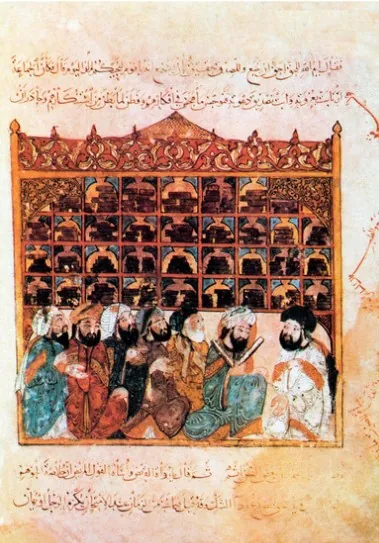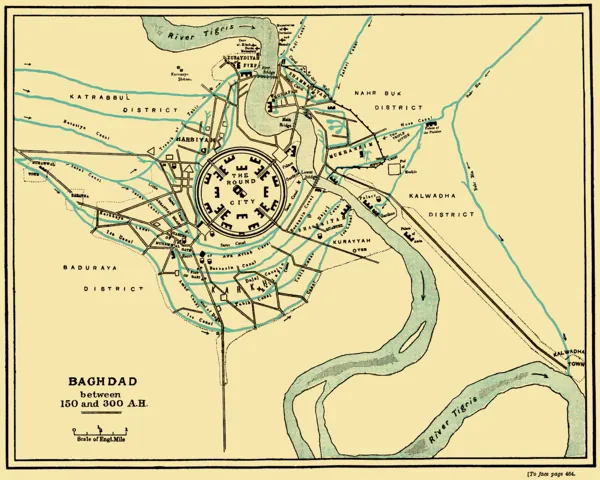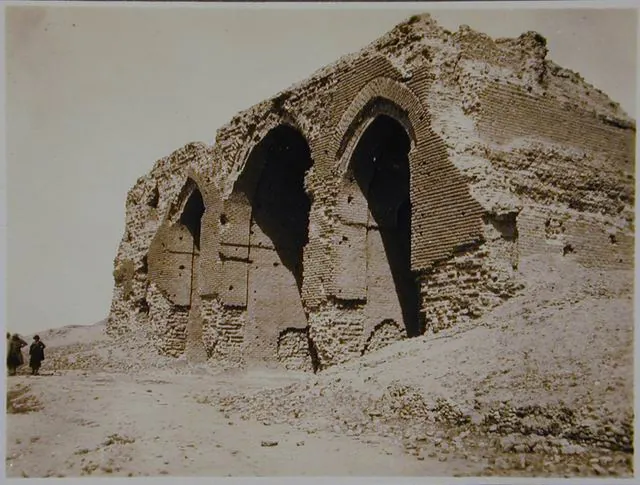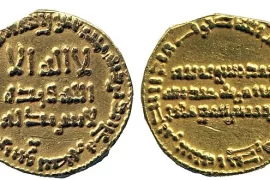The Abbasid Caliphate, also known as the third of the Islamic caliphates, was a significant Islamic state that ruled from 750 to 1258 AD. The Abbasids were known for their contributions to Islamic art, science, and culture. Under their rule, the Islamic world experienced a period of great prosperity and expansion, with advancements in fields such as mathematics, astronomy, medicine, and literature.
The Rise of the Abbasid Caliphate
Who was Abbas? Who were Abbasids?
The Abbasids descended from Abbas ibn Abd al-Muttalib, who was the paternal uncle of Prophet Muhammad (PBUH). He was one of the most celebrated companions of the Prophet. He died in 653 AD.
His son Abdullah ibn Abbas was also a celebrated authority of Islamic traditions and law. It is said that the Angel Gabriel appeared to him , when Abdullah was only ten years old, revealed to him the meaning of the Quran which accounted for his intimate acquaintance with the latter and meaning of the Holy Book. He was called Tarjumanul Quran or the “interpreter of Quran” .
Abdullah Ibn Abbas was appointed governor of Basrah by the Caliph Ali which office he held for some time. He returned to the Hijaz and died at Taif in 687 AD.
The Abbasids belonged to the Hashemite clan, which was a branch of the larger Quraysh group in Mecca. They were considered cousins of Umayyads.
Abbasid Revolution
The Abbasid Revolution, also known as the Hashimiyya Revolution marked the end of the Umayyad Caliphate and the rise of the Abbasid Caliphate.
The Umayyad Caliphate, which had its capital in Damascus, ruled over the Islamic world for almost a century (661-750 CE). The Umayyads were known for their Arab-centric policies and their harsh treatment of non-Arab Muslims. This led to growing discontent among the non-Arab population, particularly in Persia, which had a long and rich cultural heritage. In addition, the Umayyads were accused of corruption and mismanagement, which further eroded their legitimacy.
The Abbasids had been critical of the Umayyads’ policies and had been actively seeking to overthrow them.
Abu Muslim al-Khorasani, a loyal of Abbasid Imam, launched a rebellion against the Umayyads on June 15, 747 AD. He was able to rally a diverse coalition of supporters, including Persians, Kurds, and non-Arab Muslims, under the banner of the Abbasid cause. The Abbasids’ message of equality and justice resonated with many, and they were able to gain significant support in Iraq and Iran.
The Umayyads were caught off guard by the rebellion and were unable to mount an effective response.
Abu Muslim continued to work as the chief military organiser.
Who established the Abbasid Caliphate? Who was the first Abbasid Caliph?
In 750 AD Abbasid forces defeated the Umayyads in the Battle of the Zab. Abu al-Abbas al-Saffah, the leader of the Abbasids, became the new caliph and established the Abbasid Caliphate in the newly built city of Baghdad.
Abu Muslim was appointed as the governor of Khorasan as a reward for his valuable services. Even after assuming the governorship, the Abbasid rulers continued to rely on his abilities to maintain law and order. Abu Muslim proved to be a loyal servant to his patrons by successfully defeating both internal and external adversaries.
The Abbasid Caliphate Timeline
The Abbasid Caliphate had a long and eventful history that spanned over five centuries. The Abbasid Caliphate timeline shows several ups and downs, and the numerous changes it went through.
Golden Age (750-945 AD)
The first two centuries of the Abbasid Caliphate are regarded as the golden age of Islamic civilization. The caliphs of this era were great patrons of science, art, and literature. They founded several institutions of learning, including the House of Wisdom in Baghdad, which was a center of intellectual activity.
The Abbasid caliphs also encouraged the translation of Greek, Persian, and Indian works into Arabic. This led to a great cultural exchange, and Islamic scholars made significant contributions to various fields of knowledge, including mathematics, astronomy, medicine, and philosophy.
Decline (945-1258 AD)
The decline of the Abbasid Caliphate began in the 10th century when the Buyid dynasty, a Shia Muslim Persian dynasty, gained power in Baghdad. They controlled the caliphs, who became mere figureheads, while the Buyids ruled the empire.
In the 11th century, the Seljuk Turks, a Sunni Muslim Turkish dynasty, invaded the Abbasid Caliphate and established their own empire. The Seljuks controlled the caliphs and used them for legitimacy, but they ruled the empire themselves.
In the 12th century, the Crusaders invaded the Middle East and took control of Jerusalem. This led to a decline in the power and influence of the Caliphate.
In the reign of Caliph al-Mustasim, Halaku Khan, grandson of Genghis Khan, invaded Persia and became sultan in 1256 AD. Two years later, he captured Baghdad and put the Caliph to death. This marked the end of the Abbasid Dynasty.
List of Abbasid Caliphs
There were 37 Caliphs in the 509 years of the Abbasid Caliphate. Here is a list of Abbasid Caliphs with their accession year.
| Name | Accession Year (AD) |
| Abul Abbas as-Saffah | 749 |
| al-Mansur | 754 |
| al-Mahdi | 775 |
| al-Hadi | 785 |
| Harun ar-Rashid | 786 |
| al-Amin | 809 |
| al-Mamun | 813 |
| al-Mutasim | 833 |
| al-Wasiq | 842 |
| al-Mutawakkil | 847 |
| al-Muntasir | 861 |
| al-Mustain | 862 |
| al-Mutazz | 866 |
| al-Muhtadi | 869 |
| al-Mutamid | 870 |
| al-Mutazid | 892 |
| al-Muktali | 902 |
| al-Muqtadir | 908 |
| al-Qahir | 932 |
| ar-Razi | 934 |
| al-Muttaqi | 940 |
| al-Mustaqfi | 944 |
| al-Muti | 945 |
| at-Tai | 974 |
| al-Qadir | 994 |
| al-Qaim | 1031 |
| al-Muqtadi | 1075 |
| al-Mustazhir | 1094 |
| al-Mustarshid | 1118 |
| ar-Rashid | 1135 |
| al-Muqtafi | 1136 |
| al-Mustanjid | 1160 |
| al-Mustazi | 1170 |
| an-Nasir | 1180 |
| az-Zahir | 1225 |
| al-Mustansir | 1226 |
| al-Mustasim | 1242-1258 |
Major Abbasid Caliphs
Al-Mansur
Caliph Al-Mansur was the true founder of the Abbasid Caliphate. He reigned from 754 AD to 775 AD. Al-Mansur founded the city of Baghdad, which became the capital of the Abbasid Caliphate. It was also a center of intellectual, cultural, and scientific advancement. The Caliph promoted the translation of Greek and Persian works into Arabic, fostering a flourishing era of knowledge. He consolidated his power and established a strong bureaucratic system. Al-Mansur’s reign set the stage for the golden age of Islamic civilization.
Harun al-Rashid
Harun al-Rashid was the fifth caliph of the Abbasid dynasty, who ruled the Islamic caliphate from 786 to 809 AD. He was born in 763 AD in the city of Rey, near modern-day Tehran, Iran. Harun’s reign was marked by political stability, economic prosperity, and cultural flourishing. He expanded the caliphate’s territories, promoted trade, and sponsored the construction of public works. He was also a patron of arts and literature and supported the translation of Greek and Persian works into Arabic. Harun al-Rashid is famously associated with the collection of tales known as One Thousand and One Nights. He is remembered as a wise and just ruler and a symbol of the Islamic golden age.
Achievements of The Abbasid Caliphate
The Abbasid Dynasty made significant contributions to Islamic civilization and the world at large. Some of the notable achievements include:
Opening Up Islamic Empire
The Abbasids made big changes to how the Umayyad government treated non-Arabs who converted to Islam. Unlike the Umayyads, who didn’t like non-Arabs converting, the Abbasids welcomed them and gave them equal opportunities. This caused a big change in the Islamic world that lasted a long time.
During the reigns of al-Mahdi, al-Rashid, and al-Ma’mun, there was more mixing between Arab and Persian cultures. This led to new local rulers, like the Tahirids and Samanids.
The Abbasids knew that their empire had many different religions and cultures, so they made a flexible legal system and government. This helped future Islamic empires.
The House of Wisdom
The House of Wisdom was a prominent intellectual center established in the city of Baghdad, Iraq, during the Islamic Golden Age in the 9th century. It was a hub of scholarship, scientific research, and translation, where scholars from different cultures and religions gathered to exchange knowledge and ideas.
The House of Wisdom was founded by Caliph Harun al-Rashid, and later expanded by his son Caliph al-Ma’mun. The Caliphs were known for their patronage of the arts and sciences, and they encouraged scholars from different backgrounds to come and work together in the House of Wisdom.
The House of Wisdom was home to a massive library, which contained thousands of manuscripts and books from all over the world. The scholars who worked there were tasked with translating these works into Arabic, which was the lingua franca of the Islamic Empire at the time. The translations covered a wide range of subjects, including philosophy, mathematics, astronomy, medicine, and geography.

Yahya al-Wasiti (ca. 1237) (Science Source/akg-images)
It was also a center for scientific research, and scholars there made important contributions to fields such as algebra, trigonometry, and astronomy. One of the most famous scholars who worked at the House of Wisdom was the Persian polymath Al-Khwarizmi, who is often referred to as the father of algebra.
The House of Wisdom was not just a place for scholars to work, but also a place for public lectures and debates. It was open to people of all backgrounds, including Muslims, Christians, Jews, and Zoroastrians. This inclusivity and openness were hallmarks of the Islamic Golden Age, and it allowed for the free flow of ideas and knowledge between different cultures and religions.
Unfortunately, the House of Wisdom was destroyed in the Mongol invasion of Baghdad in the 13th century. However, its legacy lived on through the many works of scholarship and scientific discoveries that were made there. The House of Wisdom remains a symbol of the importance of education and the pursuit of knowledge in Islamic culture.
Scientific achievements
The Abbasid Caliphate was a great patron of science. Islamic scholars made significant contributions to various fields of knowledge, including mathematics, astronomy, medicine, and philosophy. They developed algebra, created astronomical instruments, and made advances in medicine.
Art and literature
The Abbasid Caliphs were great patrons of art and literature.
Architecture
During the Abbasid era, the rulers were great patrons of architecture and city planning. One of the most notable examples is the city of Baghdad, which was founded by the Abbasid caliph Al-Mansur in 762 AD. The city was carefully planned and laid out in a circular design, with the caliph’s palace at its center. This design allowed for easy access to all parts of the city and provided a sense of unity and cohesion.

Abbasid Caliphs built monumental gates and Iwans ( rectangular or square-shaped hall or space, typically vaulted or domed, with one or more open sides that face a courtyard or open space) to display their power and a showcase of their achievement and authority for the posteriority. Baghdad, for example, had four such gates celebrating the city and its founder Caliph Al-Mansur (754-775 AD)
Another example of Abbasid architecture is the Great Mosque of Samarra, which was built in the 9th century in present-day Iraq. The mosque is notable for its massive size and unique design, with a spiral minaret that stands over 50 meters tall. The construction of this mosque required a great deal of engineering skill and resources, and it is a testament to the Abbasid’s commitment to architectural innovation and excellence.
Pointed Arch
The pointed arch was a significant innovation in Muslim architecture, as it allowed for the creation of larger and more complex structures with greater stability and durability. One of the most famous examples of the use of pointed arches in Abbasid architecture is the Al-Aqsa Mosque in Jerusalem. The elegance and practicality of the pointed arch in Abbasid architecture were so impressive that even Christian leaders of the Crusades, who were often at odds with the Islamic world, were inspired by it. They subsequently adopted this architectural style in their constructions in Europe. The pointed arch became a hallmark of Gothic architecture, which flourished in Europe during the Middle Ages.

Major Abbasid Architectures
- BaB Al-Amma of Samara ( Built by Al-Mutawakkil, 836-37)
- City of Baghdad ( 762)
- Al-Rafiq (Built in 772 by Al-Mansur)
- City of Samara (836)
- Rebuilding of Al-Aqsa (rebuilt by Al-Mahdi in 780)
- The central mosque of Al-Mutawakkil ( 848-849 AD)
- Ibn Tulun Mosque
- Ukhaidir Palace
[ If you are interested in a detailsed study of Abbasid Architecture, you might find the article ‘Abbasid Architecture Through Its Icononic Monuments‘ interesting.]
Trade and commerce
The Abbasid Caliphate was a major hub of trade and commerce. They established trade routes that connected the Middle East with Europe, Africa, and Asia. This led to an economic boom, and the empire became one of the wealthiest in the world.
Religious tolerance
The religious policies of the Abbasid Caliphates were marked by adaptability and inclusivity, which set the stage for various reforming steps in the modern era. The caliphs patronized the Hanafi branch of Islamic law, which allowed for rational flexibility and became the official basis of Islamic law under the Ottomans. This legalistic current opened the door for new trends and reforms in the Islamic world. (1)
Under the leadership of caliph al-Ma’mun, the Abbasids not only encouraged scientific thinking but also sought to curb the militant preaching associated with the Wahhabi branch of Islam. The caliph’s policies were inclusive and accepting of both Sunni and Shi’a Muslims, reflecting the spirit of ecumenism.
The Abbasids also incorporated Sufism and futuwwa, a chivalric code of conduct, as mainstream ideas. Caliph al-Nasir followed policies that were inclusive of both Sunni and Shi’a Muslims. His successor, al-Mustansir, patronized the building of religious schools that included more than one branch of Islamic legal practice.
The Abbasid bureaucracy provided many examples of Muslims and non-Muslims serving together, serving as a model for later Islamic empires. This broad sweep of Abbasid history shows that progressive steps toward change and inclusivity came from the Islamic past itself,
The Decline of the Abbasid Caliphate
The decline of the Abbasid Dynasty can be attributed to several factors, including:
Political instability: The Caliphs faced several challenges to their authority. The Buyids, Seljuks, and other dynasties gained power in Baghdad and used the caliphs for legitimacy, but they ruled the empire themselves.
Economic decline: The Caliphate’s economic power began to decline in the 10th century. This was due to several factors, including corruption, excessive spending, and declining trade.
External invasions: The Crusaders and Mongols invaded the Middle East and weakened the Abbasid Caliphate’s power and influence. The Mongols destroyed Baghdad in 1258, which marked the end of the Abbasid Caliphate.
Reference
- El-Hibri, Tayeb (2021). The Abbasid Caliphate. Cambridge University Press. pg.285








Excellent